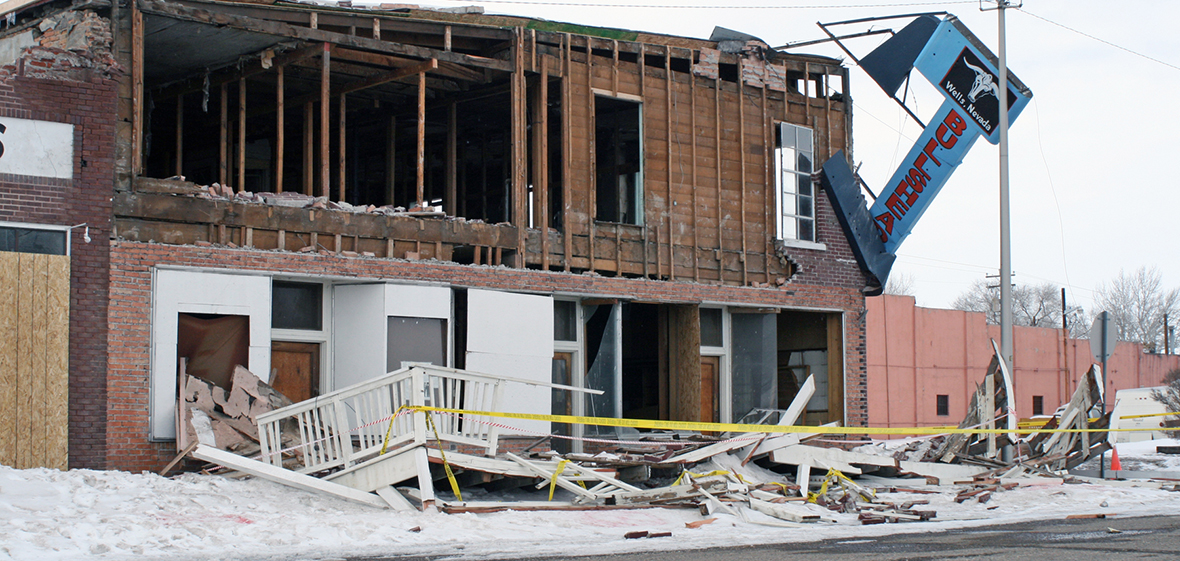International experts will join with local seismologists in a public forum Tuesday, April 19 to inform the region on the dangers and probabilities of devastating earthquakes, and how to recover economically as a region.
Contrary to the general public perception, the California-Nevada border region is at risk for large, magnitude 7-plus earthquakes striking the greater Reno-Tahoe region. In a magnitude 6 earthquake, according to FEMA estimates, the region could suffer billions of dollars in damage: $1.9 billion in the Reno/Sparks area and $590 million in the Stateline area.
"Considering the unpredictability of large events anywhere in the western U.S., the local earthquake risk and issues of economic fragility are as important here in Nevada as in California, the Pacific Northwest and Utah," Graham Kent, director of the Nevada Seismological Laboratory, said. "With the Seismological Society of America having their annual meeting here next week, we have a great opportunity to bring experts together with our community - those who need to put plans in place not only for disaster response but, just as importantly, a plan for quick economic recovery."
The first of its kind in Nevada, the Earthquake Economic Resiliency Forum, organized by the Nevada Seismological Lab, is for those who hold critical positions within the local, state and federal government, small business owners, large business owners, utilities, real estate agents, news organizations, insurance agents, hospital administration, and interested citizens - anyone who will be impacted by a large earthquake event.
The aim of the meeting is to address specific solutions tailored to our communities and how we might implement them.
Managed properly, this approach can minimize the economic impact in the weeks, months and years following a large event and may be the most important aspect to a community's long-term health.
"The latter task is no small feat given the current roadblocks that the region faces and an economy that is in an era of unprecedented growth - we must collectively plan today," Kent said. "The first step toward economic resiliency to natural hazards is to understand all of the interrelated and potentially cascading dependencies that may occur shortly after an earthquake or major disaster.
"Let's band together, plan together, and be prepared when the next large earthquake hits our community. Remember, on average, this border region experiences one M6 earthquake each decade, and one M7 every 30 years. Let's take advantage of this extraordinary quiescent period in our earthquake history."
Guest speakers will introduce an up-to-date view of earthquake hazards within the region, followed by 'real world experience' when it comes to building an earthquake resilient community.
Speakers include:
• Mark Stirling, chair of Earth Sciences Department at the University of Otago, New Zealand who will present lessons learned from the destructive Canterbury Earthquake Sequence;
• Christopher Burton of Global Earthquake Model in Pavia, Italy with his talk "Back to Normal: Earthquake Recovery Modeling Project, Napa, California;"
• Cory Lyman, Salt Lake City Emergency Management Program director of the "Fix the Bricks" Program;
• Dick McCarthy, executive director, California Seismic Safety Commission, in a panel discussion on "next steps;"
• Several local experts from the Nevada Seismological Lab, the Nevada Bureau of Mines and Geology and the City of Reno.
The forum is at the Eldorado Resort Casino from 8:45 a.m. to 2:30 p.m. April 19th, 2016. The forum is free and open to the public, pre-registration is required. Please register by emailing Erik Williams at eswilliams@unr.edu.
The forum precedes the annual Seismological Society of America meeting being held in Reno, Nevada April 20-22 at the Peppermill Resort Hotel. The seismological annual meeting has attracted 800 seismologists from around the country and around the world. Inquires can be directed to Graham Kent at gkent@unr.edu.












